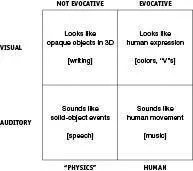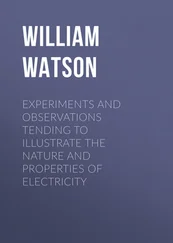Mark Changizi - Harnessed - How Language and Music Mimicked Nature and Transformed Ape to Man
Здесь есть возможность читать онлайн «Mark Changizi - Harnessed - How Language and Music Mimicked Nature and Transformed Ape to Man» весь текст электронной книги совершенно бесплатно (целиком полную версию без сокращений). В некоторых случаях можно слушать аудио, скачать через торрент в формате fb2 и присутствует краткое содержание. Год выпуска: 2011, Издательство: Perseus Books Group, Жанр: Старинная литература, на английском языке. Описание произведения, (предисловие) а так же отзывы посетителей доступны на портале библиотеки ЛибКат.
- Название:Harnessed: How Language and Music Mimicked Nature and Transformed Ape to Man
- Автор:
- Издательство:Perseus Books Group
- Жанр:
- Год:2011
- ISBN:нет данных
- Рейтинг книги:5 / 5. Голосов: 1
-
Избранное:Добавить в избранное
- Отзывы:
-
Ваша оценка:
- 100
- 1
- 2
- 3
- 4
- 5
Harnessed: How Language and Music Mimicked Nature and Transformed Ape to Man: краткое содержание, описание и аннотация
Предлагаем к чтению аннотацию, описание, краткое содержание или предисловие (зависит от того, что написал сам автор книги «Harnessed: How Language and Music Mimicked Nature and Transformed Ape to Man»). Если вы не нашли необходимую информацию о книге — напишите в комментариях, мы постараемся отыскать её.
Harnessed: How Language and Music Mimicked Nature and Transformed Ape to Man — читать онлайн бесплатно полную книгу (весь текст) целиком
Ниже представлен текст книги, разбитый по страницам. Система сохранения места последней прочитанной страницы, позволяет с удобством читать онлайн бесплатно книгу «Harnessed: How Language and Music Mimicked Nature and Transformed Ape to Man», без необходимости каждый раз заново искать на чём Вы остановились. Поставьте закладку, и сможете в любой момент перейти на страницу, на которой закончили чтение.
Интервал:
Закладка:
In an effort to answer, let’s go back to the French instructional program and my proud, and then concerned, mother. Why was I joining my mom each day for a lesson I couldn’t comprehend, and had no intention of comprehending? Truth be told, it wasn’t an audiotape we were listening to, but a television show. And it wasn’t the meaningless-to-me speech sounds that lured me in, but one of the actors. A young French actress, in particular. Her hair, her smile, her mannerisms, her pout . . . but I digress. I wasn’t watching for the French language so much as for the French people, one in particular. Sorry, Mom!
What was evocative about the show and kept me wanting more was the human element. The most important thing in the lives of our ancestors was the other people around them, and it is on the faces and bodies of other people that we find the most emotionally evocative stimuli. So when one finds a human artifact that is capable of evoking strong feelings, my hunch is that it looks or sounds human in some way. This is, I suggest, an important clue to the nature of music.
Let’s take a step back from speech and music, and look for a moment at evocative and nonevocative visual stimuli in order to see whether evocativeness springs from people. In particular, consider two kinds of visual stimuli, writing and color—each an area of my research covered in my previous book, The Vision Revolution .
Writing, I have argued, has culturally evolved over centuries to look like natural objects, and to have the contour structures found in three-dimensional scenes of opaque objects. The nature that underlies writing is, then, “opaque objects in 3-D,” and that is not a specifically human thing. Writing looks like objects, not humans, and thus only has the evocative power expected of opaque objects: little or none. That’s why most writing—like the letters and words on this page—is not emotionally evocative to look at. (See top left of Figure 15.) Colors, on the other hand, are notoriously evocative—people have strong preferences regarding the colors of their clothes, cars, and houses, and we sense strong associations between color and emotions. I have argued in my research and in The Vision Revolution that color vision in us primates—our new-to-primates red-green sensitivity in particular—evolved to detect the blood physiology modulations occurring in the skin, which allow us to see color signals indicating emotional state and mood. Color vision in us primates is primarily about the emotions of others. Color is about humans, and it is this human connection to color that is the source of color’s evocativeness. And although, unlike color, writing is not generally evocative, not all writing is sterile. For example, “V” stimuli have long been recognized as one of the most evocative geometrical shapes for warning symbols. But notice that “V” stimuli are reminiscent of (exaggerations of) “angry eyebrows” on angry faces. Color is “about” human skin and emotion, and “V” stimuli may be about angry eyebrows—so the emotionality in each one springs from a human source. (See top right of Figure 15.) We see, then, that the nonevocative visual signs look like opaque, not-necessarily-human objects, and the evocative visual signs look like human expressions. I have summarized this in the top row of the table in Figure 15.

Figure 15. Evocative stimuli ( right column) are usually made with people, whereas nonevocative stimuli ( left column) are more physics-related and sterile.
Do we find that evocativeness springs from the same human source within the auditory domain? Let’s start with speech. As we discussed in the previous chapter, speech sounds like solid-object physical events. “Solid-object physical events” amount to a sterile physics category of sound, akin in nerdiness to “three-dimensional world of opaque objects.” We are capable of mimicking lots of nonhuman sounds, and speech, then, amounts to yet another mimicry of this kind. Ironically, human speech does not sound human at all. It is consequently not evocative. (See the bottom left square of Figure 15 for speech’s place in the table.) Which brings us back to music, the other major kind of auditory stimulus people produce besides speech. Just as color is evocative but writing is not, music is evocative but speech sounds are not. This suggests that, just as color gets its emotionality from people, perhaps music gets its emotionality from people. Could it be that music, like Soylent Green, is made out of people? (Music has been placed at the bottom right of the table in Figure 15.)
If we believe that music sounds like people, then we greatly reduce the range of worldly sounds music may be mimicking. That amounts to progress: music is probably mostly not about birdsong, wind, water, math, and so on. But, unfortunately, humans make a wide variety of sounds, some in fundamentally different categories, such as speech, coughs, sneezes, laughter, heartbeats, chewing, walking, hammering, and so on. We’ll need a more specific theory than one that simply says music is made from people. Next, though, we ask why there isn’t any purely visual domain that is as exciting to us as music.
Going Solo
If the visual system and auditory system had competitive streaks, they might argue about which modality has the most compelling art. Each would be allowed to cite as examples only cases exclusively within its own modality: vision-only versus audition-only. This is a difficult contest to officiate. Should vision be allowed to cite all the features of visual design found in culture, such as clothes, cars, buildings, and everyday objects? If so, it would have a big leg up on audition, which is not nearly so involved in the design of our physical artifacts. Let’s agree not to include these, by virtue of an “official rule” that the art must be purchased by people for the purpose merely of enjoying the aesthetics, with no other functional benefit. That is, is it vision or audition that commands the greatest portion of the market for art and entertainment?
If you set it up in this way, audition trounces vision. Although the visual modality is found in huge markets like television, video games, and movies, these rely on audition as well. People put visual art on their walls, but that typically amounts to just a few purchases, whereas it is common to find people who own thousands of music albums. The market for the purely visual arts is miniscule compared to that for audition. This is counterintuitive, because if you ask most of us to name the most beautiful things we know of, we are likely to respond with a list of visuals. But when we vote with our pocketbooks, audition wins the solo artist contest. Why is that?
One possible explanation is simply that it is easier to carry on with the chores of life while music is in the background, whereas the visual arts inherently get in the way. Try driving or working or throwing a dinner party while admiring the Mona Lisa. But I suspect it is more than this. If it was merely because of the difficulty of enjoying visual arts while having a life, one might expect us to want to stare at beautiful visual art all day, if only we had nothing else pressing to do. Most of us, however, don’t exactly fancy the idea of watching visual images all day (without sound). Listening to music all day, however, sounds quite charming! And, in fact, many of us do spend our days listening to music.
The stark inequality of vision and audition in this competition for “best solo performer” in the arts is due to a fundamental ecological asymmetry. When we see things in the world, those things are typically making noise. Seeing without hearing therefore feels strange, unnatural, or as if it is missing something. But hearing without seeing is commonplace, because we hear all sorts of things we cannot see—when our eyes are closed, when the source is behind us, when the source is occluded, or when the environment is dark. Sights nearly always come with sounds, but sounds very commonly come without sights. And that’s why audition is happy to be a solo artist, but vision isn’t. Music is the single-modality artist extraordinaire.
Читать дальшеИнтервал:
Закладка:
Похожие книги на «Harnessed: How Language and Music Mimicked Nature and Transformed Ape to Man»
Представляем Вашему вниманию похожие книги на «Harnessed: How Language and Music Mimicked Nature and Transformed Ape to Man» списком для выбора. Мы отобрали схожую по названию и смыслу литературу в надежде предоставить читателям больше вариантов отыскать новые, интересные, ещё непрочитанные произведения.
Обсуждение, отзывы о книге «Harnessed: How Language and Music Mimicked Nature and Transformed Ape to Man» и просто собственные мнения читателей. Оставьте ваши комментарии, напишите, что Вы думаете о произведении, его смысле или главных героях. Укажите что конкретно понравилось, а что нет, и почему Вы так считаете.












